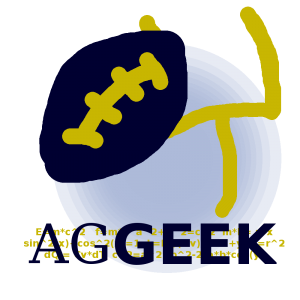 A 45-0 loss is bad. There aren’t many silver linings to talk about. On the other hand, there are more nuances to this disaster than the comfortable and untrue standby “oh, our football team sucks.” The loss was a product of many unfortunate circumstances that built up in the preceding months. At the very least, we can take solace in the fact that it won’t happen again.
A 45-0 loss is bad. There aren’t many silver linings to talk about. On the other hand, there are more nuances to this disaster than the comfortable and untrue standby “oh, our football team sucks.” The loss was a product of many unfortunate circumstances that built up in the preceding months. At the very least, we can take solace in the fact that it won’t happen again.
No Run, No Game
Ron Gould, our second-year coach, was famous at his old school, Cal, for coaching NFL-caliber running backs. Last year he brought that expertise to Davis and developed several backs including offensive star Gabe Manzanares.
Simply put, we grew to depend on the ground game. We never won a game last year where Manzanares didn’t gain 100+ rushing yards. His breakout game, Idaho State, exactly coincided with our first win of the season. Manzanares also had a remarkable ability to perform consistently regardless of opponent quality; only one defense, Montana’s, actually found a way to stop him from gaining 100 during conference play. (Montana sent tons of players to the NFL that year.)
Unfortunately injuries happen. We did not have Manzanares this weekend. Nor did we have his backup, Manusamoa Luuga. Nor did we have Luuga’s backup, Tavior Mowry. They were all either injured or at risk of getting reinjured. We also had a talented freshman recruit, Mitchell Layton, drop out for unknown reasons.
So one of the reasons we scored absolutely zero points was that we simply did not have the personnel to move the ball in our style of offense. Our two remaining running backs, veteran Colton Silveria and freshman Justin Williams, did play and each averaged about three yards per carry against Stanford. We’ll never know for sure, but if we had a larger arsenal of backs pounding Stanford some of them might have achieved 4-5 yards per carry, which is healthy for establishing a run game.
But What About Passing?
Well, the generic answer is that without a solid run game, passing is more difficult because the defense feels comfortable spreading out more. Once Stanford realized they could use their bulk and speed to stop our runs in their tracks, they could spare personnel to make our receivers’ life difficult.
A specific problem we had is that we also lacked personell for receiving. Manzanares was our top rusher but also led the team in receiving yards last year. He was second in total receptions (the first-place guy graduated) as well. TJ King, our expected main wide receiver, did start but got injured in the first half. And Alex Cannon, a potential threat who was injured last year, didn’t play for unknown reasons. So not only did we not have the running backs we expected, we didn’t have the receivers we wanted either.
Even then, QB London Lacy did complete 12/22 passes. Let’s be clear on that: even against Stanford defense, even with our two top receivers out for at least half of the game, we still completed over half of our passes. Things are not hopeless yet.
About the QB Situation…
Startin Lacy ended up being a game-time decision, according to Gould. But the road to get to him was quite complicated:
Last year, we received a talented QB transfer from Boise State (whose coach was a Davis alum) named Jimmy Laughrea. Laughrea started several games but, while displaying quite a bit of athletic talent, failed to win the first three games he started. He was replaced in Game 5 by the old senior starter, Randy Wright. Wright’s reappearance also corresponded with Manzanares’ breakout and the two led us to five wins in the eight remaining games.
Wright graduated Fall Quarter last year, leaving Laughrea a seeming sure-fire starter. Unfortunately, he left the team for unknown reasons later in the school year. The coaching staff scrambled to grab a quarterback recruit, and settled on Turner Baty from the championship-winning San Francisco Community College.
Baty was decent in practice but didn’t stand out. Thus the only two quarterbacks remaining with serious bids to the starting job were Lacy and Ben Scott, with Lacy, a three-year backup, having the edge in experience.
So we started London Lacy, a decent but seemingly unspectacular quarterback that most casual Aggie fans may not recognize. The point here is that in the quarterback slot, as with the running back and receiver positions, we weren’t playing Stanford with the roster we groomed for the game.
Regarding Defense
Our defense is actually decent this year, and is supposed to do well against teams our own size. They actually stopped a few Stanford runs (despite a huge size disadvantage) and forced turnovers and sacks.
Stanford still ran up the score because their offense was very, very good. Their first-string receivers, particularly Ty Montgomery, were simply too fast for us to handle. Understand, though, that these receivers are freakishly good. Very few other teams in the nation will have that kind of talent in the position, and almost certainly not any teams we will face for the rest of the year. Our defense struggled against Stanford, but may not against other schools.
Money Matters
If you look at funding, then Stanford should have won. Ignoring what they pay their coaches, ignoring their advertising, ignoring their recruiting budget and any other peripheral expense, they still have a fundamental advantage in that they are allowed to give more scholarships than us.
To explain: Stanford, as an FBS school, is allowed to give 85 full scholarships to 85 football players. UC Davis, an FCS school, is allowed to give the equivalent of 63 full scholarships spread between 85 players. Stanford has a finite, quantifiable advantage that, all other things being equal, would allow them to recruit more athletes and build more depth. All other things being equal, Stanford would win any matchup with us.
Our only hope, therefore, was to build a Moneyball-esque team of misfit players with the intention of producing the most output per dollar. To some extent, we created a team to do that and had a roster prepared circa December that would have a shot at putting points up against Stanford. As discussed earlier, however, at every turn we were stymied due to injuries and dropouts. We did not play Stanford with that roster; we played them with intended backups in the skill positions.
Now, Stanford’s offense probably would have scored the same either way. (Maybe a little less — as we’d give them less time to handle the ball if we were moving more on offense.) But with our top running backs, an athletic returning quarterback, and a full receiving arsenal, a more reasonable outcome might have been attainable. If luck had gone our way, we’d be coming off maybe a 38-17 loss right now, not a 45-0 blowout.
Talking Points
-Stanford is better than us, but the score may not be reflective of the strength of our team.
-We will not be facing a team as good as Stanford for the rest of the season, so problems that existed this weekend may not surface again.
